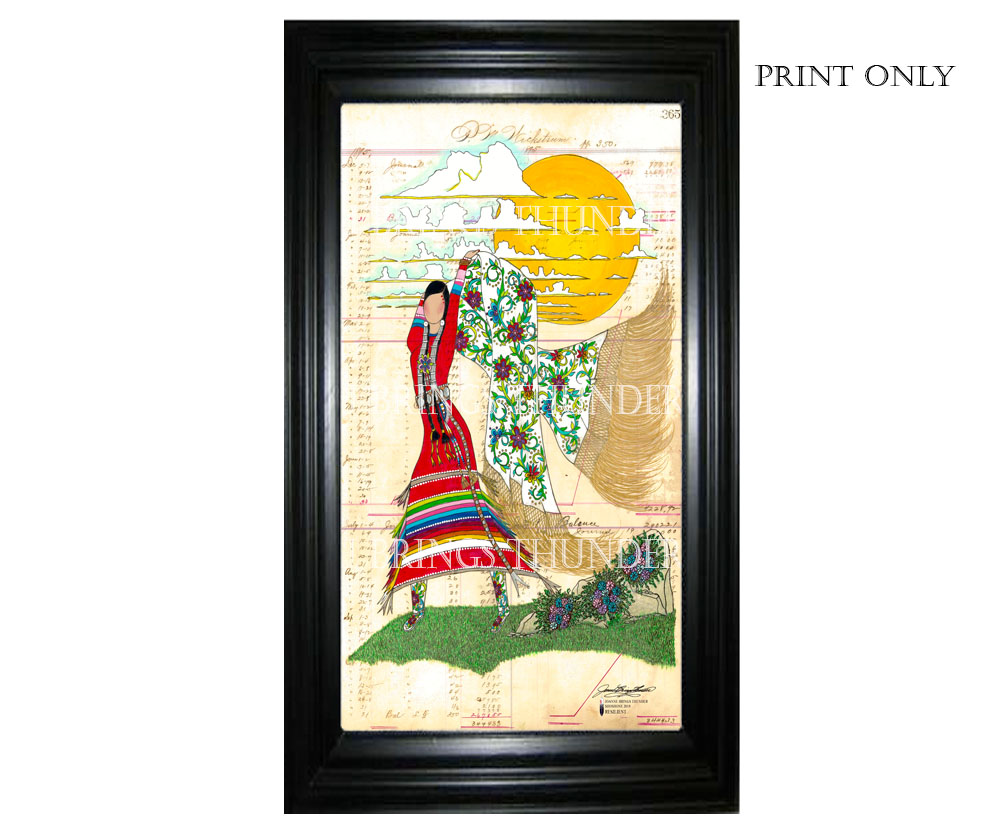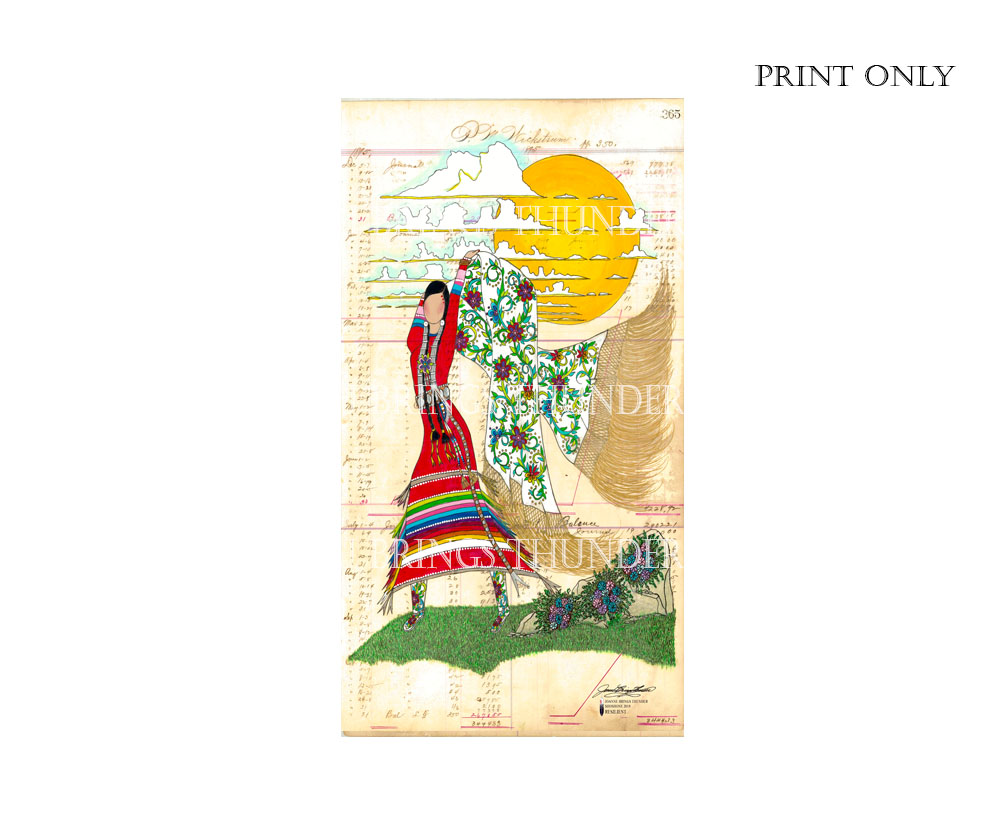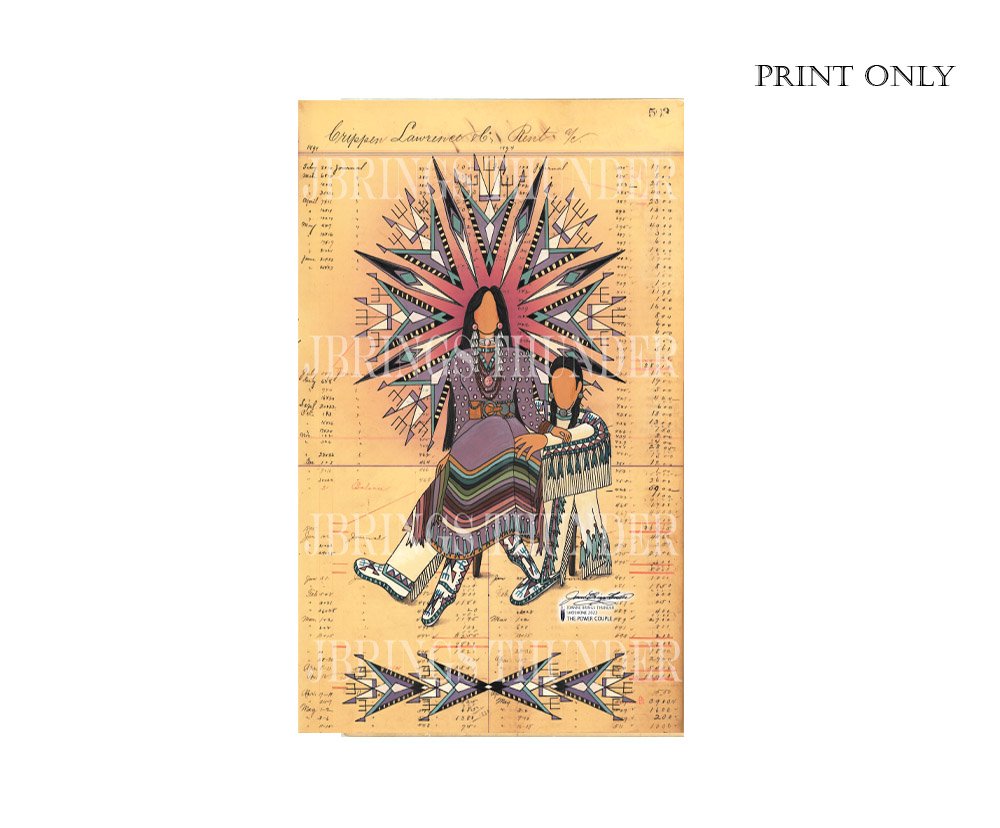Strikes Above




Strikes Above
***PRINT ONLY***
Strikes Above
Mixed Media : Ledger Paper, Acrylic, Chalk Pastel, India Ink
Dimensions: 11”x17”
Original: 1810 Ledger Paper
By: Joanne Brings Thunder - Wind River Shoshone
Some women fear the fire and become consumed by it, some are simply made from it. It’s been told that a Shoshone woman, her two children and husband were traveling from the warm valley to visit family in Idaho when they were attacked by a Crow hunting party near present day Bull Lake on the Wind River Reservation. Her husband was killed defending them as she escaped into the mountains to with her children. She hid for two days and killed three crow warriors from the high ground that surrounds area. Help finally arrived to bring her and her children back to camp. From that day forward she was held in very high regard and known as Strikes Above. Being soft, strong and resourceful is a combination very few have mastered. Strikes Above continues to stand as a resilient example and reminder of the quite strength my female Shoshone ancestors lived .
Ledger Art History
This genre, often called Ledger Art, represents a transitional form of Plains Indian artistry corresponding to the forced reduction of Plains tribes to government reservations, roughly between 1860 and 1900. Due to the destruction of the buffalo herds and other game animals of the Great Plains by Anglo-Americans during and after the Civil War, painting on buffalo hide gave way to works on paper, muslin, canvas, and occasionally commercially prepared cow or buffalo hides.
Changes in the content of pictographic art, the rapid adjustment of Plains artists to the relatively small size of a sheet of ledger paper, and the wealth of detail possible with new coloring materials, marks Plains ledger drawings as a new form of Native American art. As such, ledger painting portrays a transitional expression of art and material culture that links traditional (pre-reservation) Plains painting to the Plains and Pueblo Indian painting styles that emerged during the 1920s in Indian schools in Oklahoma and New Mexico.
Beginning in the early 1860s, Plains Indian men adapted their representational style of painting to paper in the form of accountants ledger books. Traditional paints and bone and stick brushes used to paint on hide gave way to new implements such as colored pencils, crayon, and occasionally water color paints. Plains artists acquired paper and new drawing materials in trade, or as booty after a military engagement, or from a raid. Initially, the content of ledger drawings continued the tradition of depicting of military exploits and important acts of personal heroism already established in representational painting on buffalo hides and animal skins. As the US government implemented the forced relocation of the Plains peoples to reservations, for all practical purposes completed by the end of the 1870s, Plains artists added scenes of ceremony and daily life from before the reservation to the repertoire of their artwork, reflecting the social and cultural changes brought by life on the reservation within the larger context of forced assimilation.
Copyright
All content including the presentation thereof on this web site is the property of Joanne Brings Thunder and protected by U.S. and international copyright laws. You may not copy, reproduce, distribute, transmit, modify, create derivative works, or in any other way exploit any part of copyrighted material without the prior written permission from Joanne Brings Thunder.










